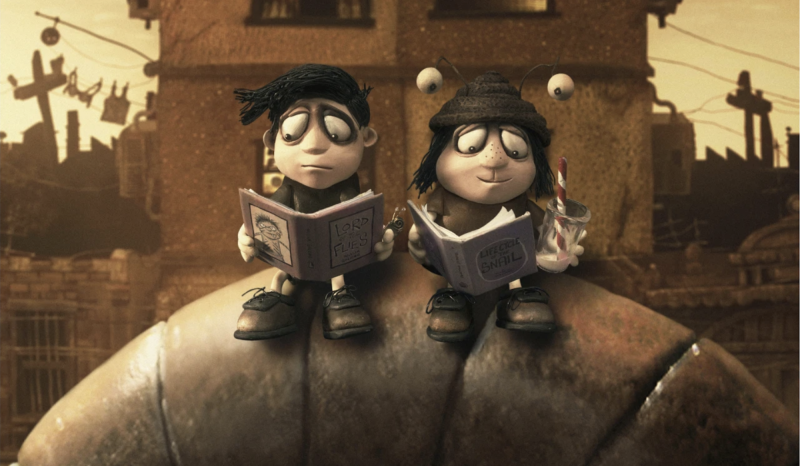Then we flash back to childhood. Grace is born with a twin brother, Gilbert (Kodi Smit-McPhee). Their mother dies in childbirth, leaving the twins with their father, a film animator. Grace needs surgery to correct a cleft palate, and doctors ask young Gilbert to donate blood; he thinks that means he’ll have to die to let her live, and still says yes. (Those tears we mentioned? They start here.)
The two siblings endure a sad life with their father, a life that becomes sadder yet when a collision with a drunk driver renders him a paraplegic. It won’t be long before their father dies in his sleep, making them orphans. And nobody wants a full set of twins, so Grace and Gilbert are forcibly separated and sent to opposite sides of Australia.
Grace is sent to Canberra, a city so boring and safe that people drive cars with helmets on. And Gilbert is sent to a farm, with a cruel family of evangelists. The two exchange letters and pray they’ll meet again. Grace’s parents are swingers (this is the ’70s), and they end up leaving her for a nudist colony. Her only companions are her snails, which she loves, just like her mother did — both the live and ornamental versions.
Pinky comes along five years later. The elderly woman — raspily voiced by longtime Australian star Jacki Weaver — has quite the past. She lost her finger dancing on a bar in Barcelona. She played ping pong with Fidel Castro. She’s outlived two husbands. Her friendship eases Grace’s sadness.
But still, there’s a deep hole where brother Gilbert should be. Grace adds kleptomania to her “list of hobbies.” She also starts hoarding in earnest. Finally, she meets Ken, a microwave repairman. She believes she has found love.
Life has more cruel twists in store, though, and you won’t see them coming in this cleverly constructed — though unabashedly odd — screenplay. But Elliot served here not only as writer-director but as production designer, and his biggest achievement is a rich visual world dominated by varying shades of brown, and populated by 7,000 handmade objects. Some 135,000 photographs taken on 200 sets were used to create the film.


